Share Post:
Learning guitar can be exciting and rewarding. Starting with the right chords makes the process smoother and more enjoyable.
This article covers the seven essential chord shapes every beginner should know.
These are the 7 Guitar Chords To Start With
- E Major
- E Minor
- A Major
- A Minor
- D Major
- C Major
- G Major
1. E Major Chord

The E major chord is one of the first chords beginners should learn. It’s simple to play and forms the basis for many songs. Here’s a detailed breakdown of how to play the E major chord:
Finger Placement
- Index Finger: Place it on the first fret of the third (G) string.
- Middle Finger: Place it on the second fret of the fifth (A) string.
- Ring Finger: Place it on the second fret of the fourth (D) string.
Strumming
Strum all six strings, starting from the low E string (the thickest string) to the high E string (the thinnest string).
Notes
The E major chord consists of the notes E, G#, and B. When you strum all six strings, you play these notes in various octaves.
Tips for Beginners
- Ensure each finger presses down firmly on the string, right behind the fret.
- Try to keep your fingers as close to the fret as possible without actually being on top of it.
- Make sure all strings ring out clearly by checking each one individually.
2. A Major Chord

The A major chord is another essential chord that beginners should learn early on. It’s widely used in many songs across various genres. Here’s a detailed explanation of how to play the A major chord:
Finger Placement
- Index Finger: Place it on the second fret of the fourth (D) string.
- Middle Finger: Place it on the second fret of the third (G) string.
- Ring Finger: Place it on the second fret of the second (B) string.
Strumming
Strum five strings, from the fifth (A) string down to the first (high E) string. Avoid strumming the sixth (low E) string.
Notes
The A major chord consists of the notes A, C#, and E. When you strum the chord, you play these notes in various octaves.
Tips for Beginners
- Ensure each finger presses down firmly on the string, right behind the fret.
- Try to keep your fingers as close to the fret as possible without actually being on top of it.
- Make sure all strings ring out clearly by checking each one individually.
3. D Major Chord

The D major chord is a fundamental chord for beginners and is used in many popular songs. Here’s how to play the D major chord:
Finger Placement
- Index Finger: Place it on the second fret of the third (G) string.
- Middle Finger: Place it on the second fret of the first (high E) string.
- Ring Finger: Place it on the third fret of the second (B) string.
Strumming
Strum four strings, from the fourth (D) string down to the first (high E) string. Avoid strumming the fifth (A) and sixth (low E) strings.
Notes
The D major chord consists of the notes D, F#, and A. When you strum the chord, you play these notes in various octaves.
Tips for Beginners
- Ensure each finger presses down firmly on the string, right behind the fret.
- Try to keep your fingers as close to the fret as possible without actually being on top of it.
- Make sure all strings ring out clearly by checking each one individually.
4. C Major Chord

The C major chord is a staple in many songs and is one of the first chords beginners should learn. Here’s how to play the C major chord:
Finger Placement
- Index Finger: Place it on the first fret of the second (B) string.
- Middle Finger: Place it on the second fret of the fourth (D) string.
- Ring Finger: Place it on the third fret of the fifth (A) string.
Strumming
Strum five strings, from the fifth (A) string down to the first (high E) string. Avoid strumming the sixth (low E) string.
Notes
The C major chord consists of the notes C, E, and G. When you strum the chord, you play these notes in various octaves.
Tips for Beginners
- Ensure each finger presses down firmly on the string, right behind the fret.
- Try to keep your fingers as close to the fret as possible without actually being on top of it.
- Make sure all strings ring out clearly by checking each one individually.
5. G Major Chord

The G major chord is a must-learn for beginners and is used in countless songs. Here’s how to play the G major chord:
Finger Placement
- Index Finger: Place it on the second fret of the fifth (A) string.
- Middle Finger: Place it on the third fret of the sixth (low E) string.
- Ring Finger: Place it on the third fret of the second (B) string.
- Pinky Finger: Place it on the third fret of the first (high E) string.
Strumming
Strum all six strings, from the low E string to the high E string.
Notes
The G major chord consists of the notes G, B, and D. When you strum the chord, you play these notes in various octaves.
Tips for Beginners
- Ensure each finger presses down firmly on the string, right behind the fret.
- Try to keep your fingers as close to the fret as possible without actually being on top of it.
- Make sure all strings ring out clearly by checking each one individually.
6. A Minor Chord

The A minor chord is another fundamental chord for beginners. It’s used in many songs and adds a minor, somber tone to your playing. Here’s how to play the A minor chord:
Finger Placement
- Index Finger: Place it on the first fret of the second (B) string.
- Middle Finger: Place it on the second fret of the fourth (D) string.
- Ring Finger: Place it on the second fret of the third (G) string.
Strumming
Strum five strings, from the fifth (A) string down to the first (high E) string. Avoid strumming the sixth (low E) string.
Notes
The A minor chord consists of the notes A, C, and E. When you strum the chord, you play these notes in various octaves.
Tips for Beginners
- Ensure each finger presses down firmly on the string, right behind the fret.
- Try to keep your fingers as close to the fret as possible without actually being on top of it.
- Make sure all strings ring out clearly by checking each one individually.
7. E Minor Chord

The E minor chord is one of the simplest and most essential chords for beginners. It’s often the first chord learned by new guitarists due to its easy finger placement. Here’s how to play the E minor chord:
Finger Placement
- Middle Finger: Place it on the second fret of the fifth (A) string.
- Ring Finger: Place it on the second fret of the fourth (D) string.
Strumming
Strum all six strings, from the low E string to the high E string.
Notes
The E minor chord consists of the notes E, G, and B. When you strum the chord, you play these notes in various octaves.
Tips for Beginners
- Ensure each finger presses down firmly on the string, right behind the fret.
- Try to keep your fingers as close to the fret as possible without actually being on top of it.
- Make sure all strings ring out clearly by checking each one individually.
Last Words
Each chord serves as a building block for countless songs and will provide a strong foundation for your guitar playing journey. With consistent practice and proper finger placement, you’ll find yourself able to play a wide variety of music in no time. Keep practicing and enjoy the process of learning and making music.
Related Posts:
- Top 10 A7 Chord Variations Every Guitarist Should Know
- Complete Guide to Identifying Acoustic Guitar Shapes…
- How Do Guitar Strings Age and When Should You Change Them?
- G Major Chord Variations - Learn 5 Ways to Add Depth…
- How to Connect a Guitar Hero Guitar to Xbox One -…
- Step-by-Step Instructions for Setting Up Guitar Pedalboards











